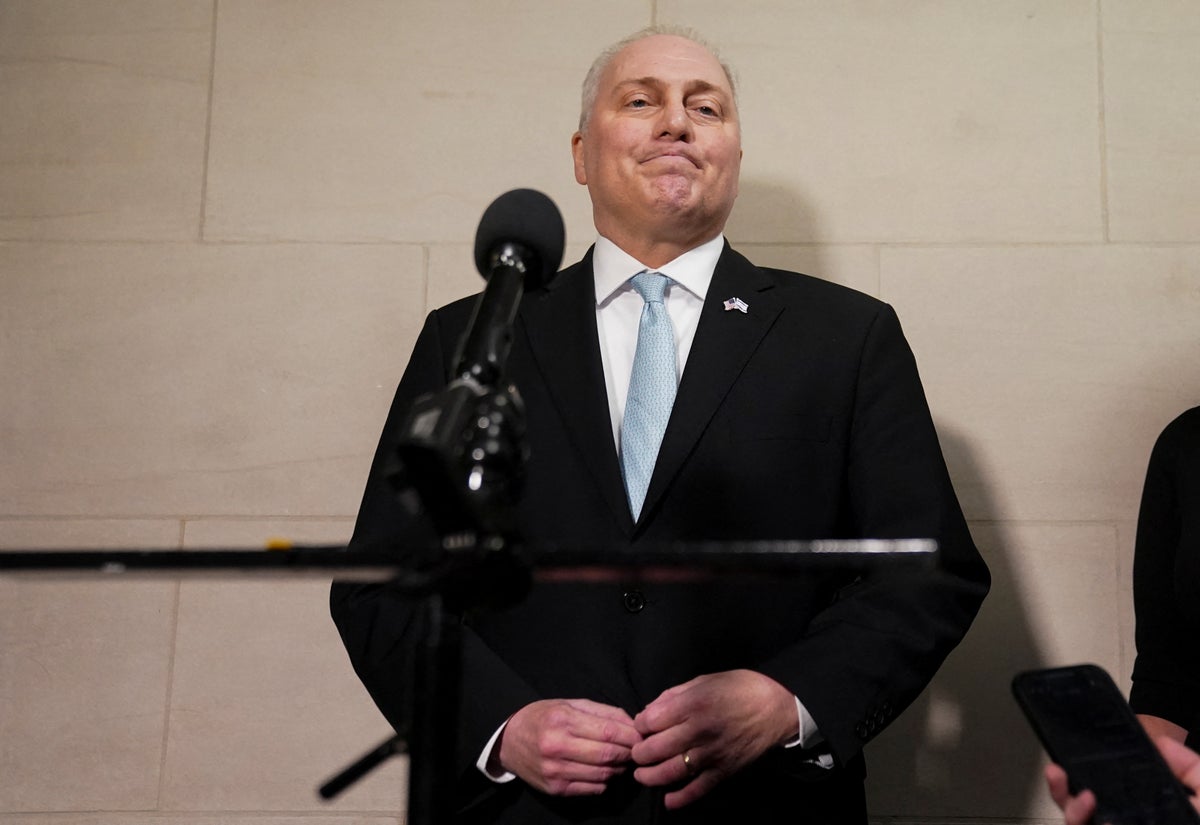When is the House speaker vote?


The initial GOP nominee for speaker, Rep Steve Scalise (R-LA), declared on Thursday (12 October) that he had been unable to secure the support he needed to take the vote to the House floor – making it unclear when exactly the lower chamber will get a new leader.
Before Mr Scalise withdrew from the race, the House gavelled in and out of session in a matter of minutes on Wednesday (11 October) as a vote of the full House on a new speaker appeared to be coming – before it quickly became clear that it wasn’t on the cards after all.
In a closed-door meeting on Wednesday, Mr Scalise defeated Rep Jim Jordan to become the Republican party’s nomination for the role.
But, facing unified Democratic opposition, any GOP nominee to follow Mr Scalise needs 217 votes from their own 221 members to grasp the gavel.
A number of Republicans are still pushing for Mr Jordan (R-OH) to become speaker, despite him receiving 99 votes to Mr Scalise’s 113 in the GOP vote on Wednesday.
“I think Jim Jordan is not out of the mix. I’ve talked to a lot of people who still support him. I’ve actually spoken to Democrats who trust him at his word. I don’t think that’s out of the realm of possibility,” Rep Nancy Mace (R-SC) told CNN before Mr Scalise’s exit.
When asked to name a single Democrat who trusts Mr Jordan, Ms Mace declined to answer, citing privacy concerns.
With this ongoing uncertainty and division, even GOP leadership can’t be sure when the vote will take place.
The process to make any new GOP member speaker may actually turn out to be longer and more arduous than Rep Kevin McCarthy’s (R-CA) January battle to grasp the gavel – which took 15 votes of the full House.
Punchbowl News notes that “the stakes this time are higher, the time frame is shorter, the opposition is larger and the House Republican Conference is angrier”.
Mr Scalise sent out surrogates on Wednesday night to understand how he could possibly flip some of the 99 Mr Jordan supporters, a number of whom had said they wouldn’t vote for Mr Scalise.
Mr Scalise’s hope – that once he became the GOP’s speaker nominee, the wing of the party who didn’t support him in the internal vote would fall in line – quickly fell flat.
House Majority Leader Steve Scalise speaks to reporters after he won a majority of votes in the House Republican caucus on Wednesday
(REUTERS)
As the GOP struggles to choose a new leader, there isn’t much time to be had amid a looming government shutdown and turmoil in the Middle East.
Rep Chip Roy appeared on rightwing radio host Glenn Beck’s programme on Thursday, steadfast in his support for Mr Jordan even after Mr Scalise won the internal GOP vote.
Mr Roy appeared to suggest that Mr Scalise is a member of the so-called “swamp”.
While Mr Jordan indicated that he would back Mr Scalise and urged his backers to do the same, Mr Roy added that he planned to still try to get Mr Jordan the votes he needs.
“We’re in a game-time decision,” Mr Roy told Mr Beck. “Who is going to be the face of the Republican Party?”
Following Mr Scalise’s failed attempt, Mr Jordan is now back in the mix.
Rep Mike Gallagher (R-WI) also commented on the GOP’s inability to choose a speaker, telling Bloomberg: “It does seem like we’ve opened the Pandora’s Box of unrestrained ambition. People feel no loyalty to this institution.”
In January, it took 15 votes for Mr McCarthy to finally get across the threshold to grasp the gavel. Currently, the majority needed for a speaker to be elected is 217 votes. The GOP nominee can only lose the backing of four Republicans – eight voted to oust Mr McCarthy.
When each House district has a representative, the number needed is 218, just over half of the House’s 435 seats.
The threshold of 217 may change if some members don’t show up to vote or if they choose to vote “present” instead of “aye” or “nay”.
xnxx,
xvideos,
porn,
porn,
xnxx,
Phim sex,
mp3 download,
sex 4K,
Straka Pga,
gay teen porn,
Hentai haven,
free Hentai,
xnxx,
xvideos,
porn,
porn,
xnxx,
Phim sex,
mp3 download,
sex 4K,
Straka Pga,
gay teen porn,
Hentai haven,
free Hentai,




